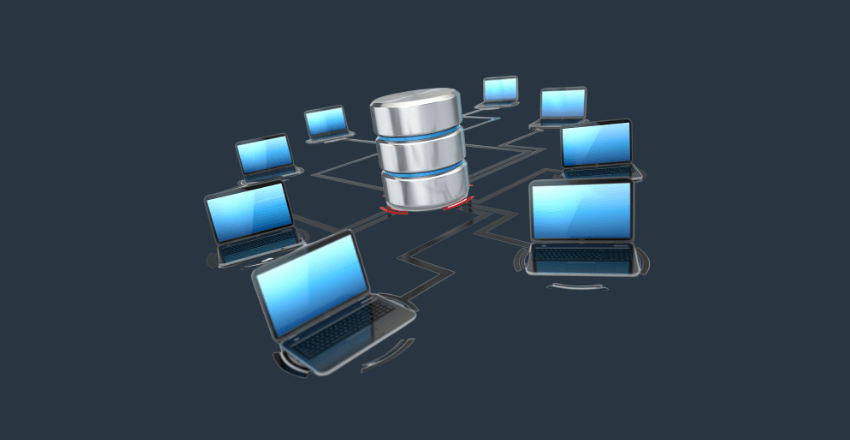
SaaS Database Schema: Streamline your data architecture, ensuring optimal performance, security, and flexibility for your platform’s growth.
Software-as-a-Service (SaaS) applications are becoming increasingly popular, with businesses and consumers relying on them for daily operations and personal needs.
With the growth of SaaS, it’s essential to have a well-designed database schema for optimal performance, scalability, and data management.
What is a SaaS Database Schema?
A SaaS database schema is a blueprint of how data is organized and structured in a database. It determines how the application and its users store, access, and manage data.
Understanding SaaS Databases
SaaS applications rely on databases to store, manage, and retrieve data. A well-designed database optimizes performance, scalability, and data management in a SaaS environment.
When selecting a database for your SaaS application, it’s important to consider data volume, performance requirements, and cost factors.
Does SaaS have a database?
Yes, SaaS applications typically have a dedicated database for storing data. Depending on the application’s needs and users, this database can be hosted in the cloud or on-premises.
Which database to use for SaaS?
Several database options are suitable for SaaS applications, each with pros and cons. Some of the most popular databases for SaaS include PostgreSQL, MySQL, and MongoDB.
PostgreSQL: PostgreSQL is a robust open-source database known for its reliability and support for advanced features, such as JSON data type and full-text search. It is a good choice for SaaS applications that require complex queries and transactions.
MySQL: MySQL is another open-source database widely used for SaaS applications. It is known for its scalability and performance, making it a good choice for applications with high data volume and many concurrent users.
MongoDB: MongoDB is a NoSQL database designed for scalability and flexibility. It is a good choice for SaaS applications with unstructured data, such as social media feeds and sensor data.
When selecting a database for your SaaS application, it’s essential to evaluate each option based on your specific requirements and constraints.
Note: In some cases, SaaS applications may use a shared database that is used by multiple clients. This approach is known as a multi-tenant database schema and can offer scalability and cost benefits.
Designing an Effective SaaS Database Schema
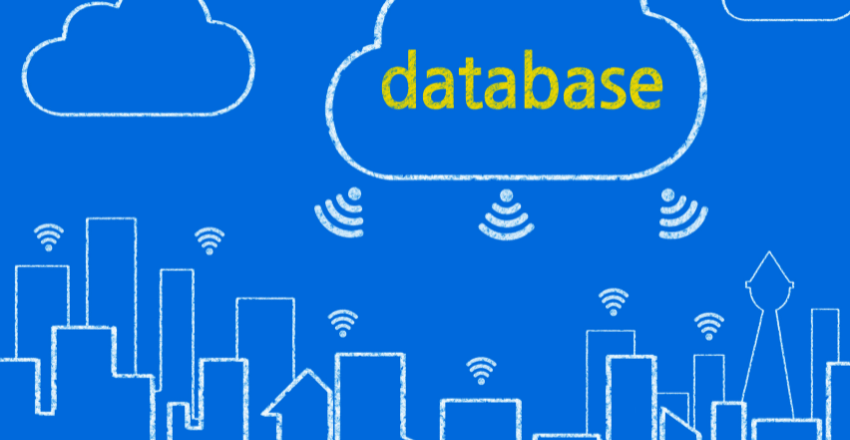
Designing a well-structured database schema is essential for maximizing a SaaS application’s performance, scalability, and data management. An adequately designed schema can minimize redundancy and improve query efficiency, simplifying data storage and retrieval.
When building a database schema for a SaaS application, it is critical to remember the normalization and denormalization principles. Normalization is restructuring data to eliminate redundancy and improve data integrity, while denormalization involves reintroducing redundancy to optimize query performance.
Another critical consideration when designing a schema is indexing. Indexes can significantly improve query performance by allowing the database to locate specific data quickly. However, over-indexing can hurt performance by slowing down data insertion and updates.
It is also essential to establish transparent relationships between tables in the schema. This can help ensure data consistency and efficient retrieval, especially when the schema involves multiple tables.
Creating a good database schema for a Software as a Service (SaaS) application can vary greatly depending on the specific requirements of your application.
But I’ll try to provide a simple, generic example of how you could structure your database. This will be a relational schema for a simplified CRM (Customer Relationship Management) application, a common type of SaaS.
Here’s a simplified schema:
Users
- ID (Primary Key)
- Email
- Password (Hashed)
- AccountID (Foreign Key -> Accounts.ID)
Accounts
- ID (Primary Key)
- Name
- CreatedAt
Contacts
- ID (Primary Key)
- AccountID (Foreign Key -> Accounts.ID)
- FirstName
- LastName
- Email
- Phone
Interactions
- ID (Primary Key)
- ContactID (Foreign Key -> Contacts.ID)
- UserID (Foreign Key -> Users.ID)
- Type
- Notes
- CreatedAtIn this schema:
UsersThe table represents the users of your SaaS. Each user has an email, a password (stored in a hashed form for security), and an associated account.AccountsThe table represents customer accounts. This is a multi-tenant model where each account can have multiple users.ContactsThe table represents the contacts each account is managing. These could be leads, customers, or anyone the account needs to track.InteractionsThe table tracks interactions between users and contacts. For example, a phone call or email could be logged here with notes about the interaction.
This is a simple example, and there would likely be many more tables and columns in an accurate CRM, but this is a start.
Pro tips:
- Multi-tenancy: In the above schema, we are using a
shared schemaA multi-tenancy model where each account’s data is stored in the same set of tables and separated using the AccountID column. This is simpler and often more efficient than creating separate tables or databases for each account but can present challenges with data isolation. - Indexes: Make sure to add database indexes on columns often used in WHERE clauses of your SQL queries. In the above example, the
AccountIDcolumns would likely need indexes. - Password Security: Always store passwords hashed (and salted) rather than as plain text.
- Normalization: The schema is normalized to reduce data redundancy and improve data integrity.
- Performance: As the system scales, you may need to denormalize your data or use other strategies to maintain performance.
- Backups: Regularly back up your database and test your backups.
- Use UUIDs: Rather than simple incremental IDs, consider using UUIDs. They are harder to guess and can be generated in distributed systems without risk of collisions.
Remember, creating a database schema involves trade-offs; the best schema for your application will depend on your specific use case. It’s often a good idea to consult an experienced database architect if you’re designing a schema for a large or complex application.
It is best to establish a transparent process for schema updates and modifications to maintain a well-designed schema. Documenting schema changes and implementing a change control process can help prevent inconsistencies and maintain data integrity over time.
Multi-Tenant Database Schema Design
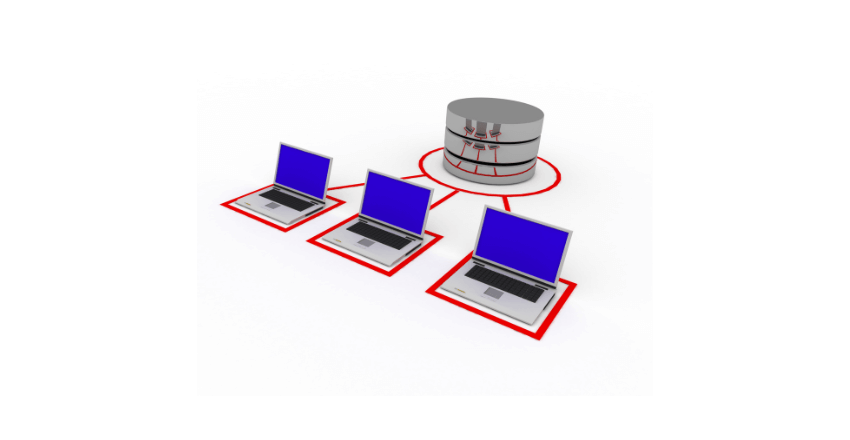
In a SaaS environment, a multi-tenant database schema refers to a single database instance that serves multiple customers or tenants. This model offers several advantages, including reduced costs, simplified maintenance, and improved scalability.
When designing a multi-tenant database schema, it’s crucial to ensure data isolation between tenants while maintaining the ability to perform aggregate analysis across the entire dataset.
One common technique for achieving this is to include a tenant identifier in each table and use views to separate tenant-specific data from global data.
PostgreSQL is a popular database option for implementing multi-tenant schemas, offering features like row-level security and partitioning for improved performance.
However, designing an effective multi-tenant schema requires careful planning and consideration of data organization, query optimization, and security.
The diagram above illustrates a typical multi-tenant data storage schema. Each tenant’s data is isolated and securely stored, ensuring data privacy and integrity. This model allows for efficient use of resources and scalability as the number of tenants increases.
Example: PostgreSQL Multi-Tenant Database Design
Consider a hypothetical SaaS application that provides CRM functionality for multiple tenants.
To create a multi-tenant database schema in PostgreSQL, you could start by creating a separate schema for each tenant, each containing identical tables:
| Tenant A | Tenant B | Tenant C |
|---|---|---|
| Contacts | Contacts | Contacts |
| Deals | Deals | Deals |
| Tasks | Tasks | Tasks |
Within each schema, you could include a table to store tenant-specific information, such as user accounts and preferences. You could create a separate schema for global data containing aggregate tables and views to allow flexible reporting and analytics across all tenants.
When querying multi-tenant schemas, you can use role-based access controls to limit access to tenant-specific data, preventing unauthorized access or accidental data leaks.
SaaS Multi-tenant with Sharded Multi-tenant Databases
Sharding is a type of database partitioning that separates large databases into smaller, faster, more manageable parts called data shards. In a SaaS context, sharding can be used in multi-tenant databases to achieve almost limitless scale. Each shard contains all the data for a specific tenant, allowing for efficient data retrieval and management.
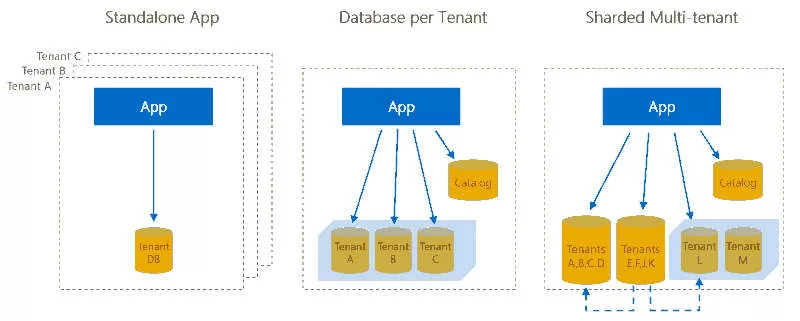
The diagram above demonstrates a sharded multi-tenant database schema. Each shard, represented by a separate database, contains data for a specific tenant. This model allows for high scalability and performance as the number of tenants increases.
Adaptive and Scalable SaaS Billing System Design
The billing system is a crucial component of SaaS applications. It needs to be adaptive to handle various billing scenarios and scalable to accommodate the growth of the user base. The design of the billing system often involves a combination of different database schemas to store user subscription information, billing cycles, payment methods, and transaction history.
The diagram above depicts a typical SaaS billing system design. It shows how various entities interact and how data flows within the system. This design allows for flexibility in handling different billing scenarios and ensures accurate and timely billing.
Choosing the Right Database for SaaS

One of the critical decisions when designing a SaaS database schema is selecting the right database management system to support it. While there are various options, some of the most popular databases used for SaaS development include PostgreSQL, MySQL, and MongoDB.
Each has its unique strengths and weaknesses, making it crucial to consider the specific requirements of your application.
| Database | Advantages | Disadvantages |
|---|---|---|
| PostgreSQL |
|
|
| MySQL |
|
|
| MongoDB |
|
|
Factors to consider when selecting a database for a SaaS application include:
- Scalability: Will the database be able to scale up as your application grows?
- Performance: Will your database handle large amounts of data and queries quickly and efficiently?
- Compatibility: Does the database work well with your chosen programming language and other tools?
- Features: Does the database offer the features you need, such as support for complex transactions or handling of unstructured data?
- Cost: What is the cost of licensing, maintenance, and hosting for the database?
Ultimately, the best database for your SaaS application will depend on your specific needs and preferences. Careful consideration of the factors above can help you choose the proper database to support your SaaS database schema and provide a reliable and scalable platform for your users.
Database Scaling and Performance Optimization

Scaling a database is crucial to ensuring the success of any software-as-a-service application. As the amount of data the application processes increases, the database must keep up with this growth without sacrificing performance or stability.
One common technique for scaling a database is sharding, which involves splitting the database into smaller, more manageable shards. Each shard can then be hosted on a separate server, allowing data to be distributed across multiple nodes and reducing the risk of performance bottlenecks.
Another essential consideration when scaling a database is replication, which involves creating multiple copies of the database to improve both performance and redundancy.
Depending on the application’s requirements, replication can be implemented in various ways, such as master-slave or multi-master.
Caching is yet another technique for optimizing database performance. By caching frequently accessed data in memory, the database can quickly retrieve this data without having to access the disk every time. This can significantly speed up database queries and reduce response times for end users.
Query optimization is also critical for optimizing the performance of a SaaS database. This involves identifying and optimizing slow or inefficient queries to reduce execution time. Techniques such as indexing, query rewriting, and schema denormalization can all be used to improve query performance.
Sharding vs. Replication
Both sharding and replication can be effective techniques for scaling a SaaS database, but they have different advantages and trade-offs. Sharding is typically more suitable for applications that require high write throughput or have large, complex data structures.
On the other hand, replication is better suited for applications requiring high read-throughput or strict data consistency requirements.
Replicating data across multiple nodes can improve performance and redundancy, making handling large queries easier and ensuring data availability in case of a node failure.
Choosing the Right Scaling Strategy
Choosing the right scaling strategy for a SaaS database involves considering various factors such as application requirements, data structure, and future growth projections.
It is also essential to regularly monitor the performance of the database and adjust scaling strategies as necessary to ensure optimal performance and scalability.
Data Management in a SaaS Environment
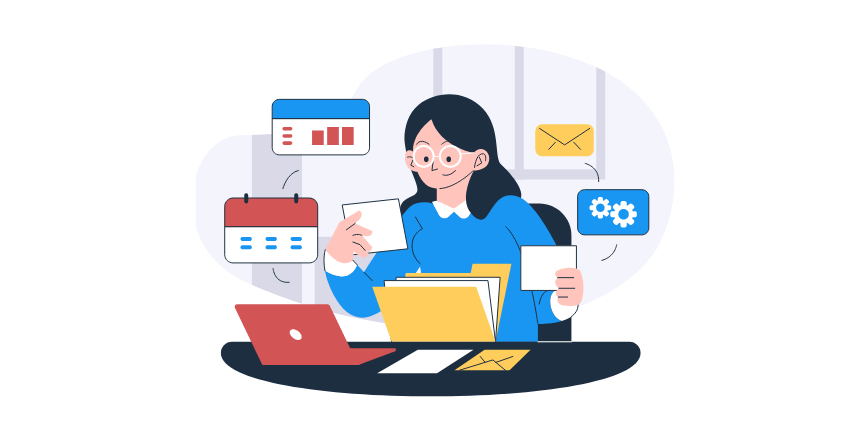
Managing data in a software-as-a-service environment presents a unique set of challenges. Here are some best practices to ensure data remains secure, compliant, and available:
Implement a Robust Backup and Recovery Strategy
Backing up data regularly is essential in the event of data loss due to system failures or human errors. Consider implementing a multi-tiered backup strategy that includes both onsite and offsite backups. Test backups regularly and make sure they can be restored quickly when needed.
Ensure Data Security and Compliance
Protecting sensitive customer data is paramount in a SaaS environment. Implement access controls that ensure only authorized personnel have access to data. Consider encrypting data both in transit and at rest. Ensure compliance with relevant regulations such as GDPR, HIPAA, or PCI-DSS.
Plan for Data Migrations
As your SaaS application grows, you may need to migrate data from one database to another. Plan for such contingencies and ensure a smooth migration process. Test the migration process thoroughly and have backup plans in case of any issues.
Perform Regular Data Audits
Conduct regular audits of your data to ensure it remains accurate, consistent, and up to date. Use tools such as data profiling and cleansing software to detect and resolve any issues. Set up alerts for any unusual data activity or anomalies that may indicate a security breach or other issues.
Define Clear Data Ownership and Responsibilities
Define clear ownership and responsibilities for data management tasks. Assign specific roles and responsibilities to individuals and teams, and ensure they have the necessary training and resources to perform their tasks effectively.
Set up workflows and approval processes to ensure data is updated and managed consistently and efficiently.
Ensuring Data Privacy and Security

Data privacy and security are critical considerations for any SaaS application. As a custodian of customers’ sensitive data, it is essential to ensure that appropriate measures are in place to protect against malicious attacks, data breaches, and unauthorized access.
Encryption:
One of the most effective ways to protect data is through encryption, which makes data unreadable by unauthorized parties. In a SaaS application, encryption can protect sensitive customer data, such as passwords, credit card numbers, and personal information.
Employing encryption technologies such as SSL or TLS can ensure that all data transmission between the application and the database is secure.
Access Controls:
Access control is another crucial aspect of database security. Granular access control mechanisms can be implemented to ensure that only authorized personnel, such as database administrators and data analysts, have access to sensitive data.
Role-based access control mechanisms enable you to control who can access data at a granular level, ensuring that only people needing specific data can do so.
| Best Practices for Data Privacy and Security in SaaS: |
|---|
| Ensure that data transmission between your application and the database is secure through encryption technologies such as SSL/TLS. |
| Implement granular access controls to ensure only authorized personnel can access sensitive data. |
| Use third-party auditing and monitoring tools that can alert you in case of any suspicious activity. |
| Conduct regular security audits to identify vulnerabilities and address them proactively. |
“As a custodian of customers’ sensitive data, it is essential to ensure that appropriate measures are in place to protect against malicious attacks, data breaches, and unauthorized access.”
Third-Party Auditing and Monitoring:
Third-party auditing and monitoring tools can help you detect and prevent malicious activity, such as unauthorized access, SQL injections, and malware attacks.
These tools can automatically scan your application and database for vulnerabilities, alert you of any suspicious activity, and help prevent data breaches from occurring.
Regular Security Audits:
Conducting regular security audits is an essential step in ensuring that your SaaS application is secure. Security audits can help you identify vulnerabilities and address them proactively, preventing data breaches from occurring.
Regular security audits should cover all aspects of your SaaS application, including your database schema, access control mechanisms, encryption practices, and third-party integrations.
By implementing these measures and best practices, you can ensure that your SaaS database schema remains secure, safeguarding your customers’ sensitive data.
Common Problems and Solutions SaaS Database Schema
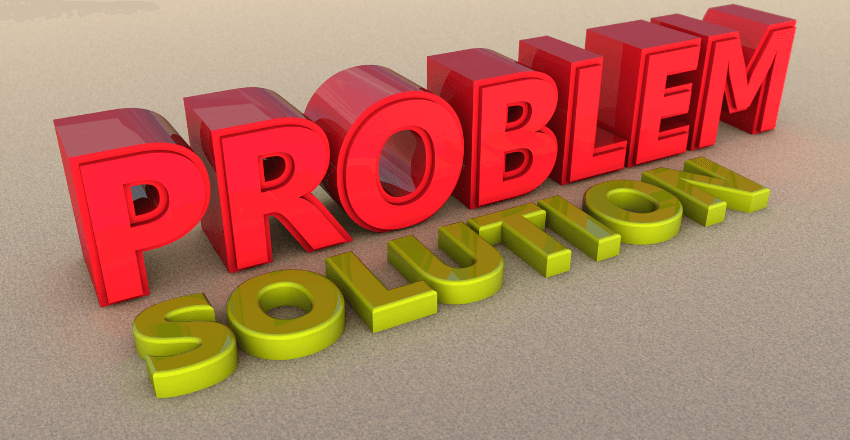
Problem: Multi-Tenancy
Multi-tenancy is a significant challenge for SaaS applications. You need to separate data for each tenant (customer), but there are various ways to do this, and each has trade-offs.
Consequences: Using a shared schema where each tenant’s data is mixed in the same tables (but distinguished by a tenant ID) can lead to data leaks if you’re not careful with every query. On the other hand, separating every tenant into their schema or even their database can add complexity, increase costs, and reduce performance.
Solution: This largely depends on the specific requirements of your application. A shared schema is often the most straightforward and efficient solution, but you must ensure every query includes the tenant ID to prevent data leaks. Consider using row-level security features available in many databases as an extra measure. This allows you to create a policy that automatically filters all queries by a tenant ID.
Pro Tip: Always thoroughly validate and test your multi-tenancy setup to ensure data isolation. Unit and integration testing, as well as regular penetration testing, are recommended.
Problem: Performance and Scalability
As the number of tenants and the amount of data grows, you can run into performance issues.
Consequences: Without proper database design and optimizations, performance can degrade as the dataset grows, leading to slower response times and unhappy customers.
Solution: There are many ways to address this, but here are a few. First, ensure your database schema is normalized to eliminate data redundancy. Secondly, make sure to index your tables properly. Columns frequently used in ‘WHERE’, ‘JOIN’, ‘ORDER BY’, or ‘GROUP BY’ clauses are typically good candidates for indexing.
Consider using a caching layer (like Redis) for frequently accessed but rarely updated data. If your dataset becomes too large to handle effectively in a single database, you may need to look into sharding, partitioning, or replication strategies.
Code Sample: Here is an example of creating an index on the AccountID column in the Users table (using PostgreSQL syntax):
CREATE INDEX idx_users_account_id ON Users (AccountID);Pro Tip: Indexes can significantly improve read performance, but they also slow down write operations and increase storage requirements, so there is a trade-off. Make sure to monitor your database performance and adjust your strategy as needed.
Problem: Data Security and Privacy
SaaS applications often deal with sensitive customer data; protecting this data is crucial.
Consequences: Data leaks can lead to loss of customer trust, legal issues, and significant damage to the company’s reputation. Failure to ensure data privacy can lead to non-compliance with regulations such as GDPR or CCPA.
Solution: Always hash and salt passwords, and never store them in plain text. Use encryption for sensitive data both at rest and in transit. Regularly update and patch your database software to fix any security vulnerabilities. Implement strict access controls and use the principle of least privilege.
This means giving users (or applications) minimal permissions to perform their tasks.
Pro Tip: Regular security audits, vulnerability testing, and following best practices for secure coding are crucial. Always stay updated with the latest security threats and mitigation strategies.
Remember, while these strategies can help mitigate some of the challenges associated with SaaS database schemas, it’s essential to regularly review your strategies to ensure they meet your SaaS applications’ evolving needs and complexities.
SaaS Database Schema FAQ

Q: What is a SaaS database schema?
A: A SaaS database schema is the logical blueprint that defines the structure and organization of data in a software-as-a-service application. It specifies how data is stored, accessed, and managed in the database.
Q: Why is a well-designed SaaS database schema necessary?
A: A well-designed SaaS database schema is crucial for optimizing performance, scalability, and data management. It helps ensure efficient query execution, minimize data redundancy, and facilitate future changes to the database schema.
Q: Does a SaaS application require a dedicated database?
A: Not necessarily. A SaaS application can use either a dedicated or shared database, depending on the specific requirements and architecture of the application.
Q: What are some considerations for building an effective database schema for a SaaS application?
A: Considerations include normalization, denormalization, indexing, and relationships between tables. The goal is to optimize the database for efficient data retrieval and minimize data redundancy.
Q: What is a multi-tenant database schema?
A: A multi-tenant database schema is a database design that enables multiple clients (tenants) to share a common database while maintaining logical and physical separation of data.
Q: Which databases are commonly used for SaaS applications?
A: Commonly used databases for SaaS applications include PostgreSQL, MySQL, and MongoDB. The choice of the database depends on various factors such as scalability, performance, ease of use, and compatibility with the chosen programming language.
Q: How can the performance of a SaaS database be optimized?
A: Techniques such as sharding, replication, caching, and query optimization can be used to optimize the performance of a SaaS database.
Q: What are some best practices for data management in a SaaS environment?
A: Best practices include strategies for backup and recovery, data security, compliance, and data migrations. Maintaining data integrity and availability is essential to ensure reliable service to clients.
Q: How can data privacy and security be ensured in a SaaS application?
A: Measures such as encryption, access controls, and vulnerability management can be used to protect sensitive customer data. Database administrators play an essential role in maintaining a secure database environment.
Sarah is an accomplished author, esteemed for her expertise in the field of data science and her engaging written works that cater specifically to the data industry. Residing in the vibrant city of London, she embarked on an academic journey at Cambridge University, where she immersed herself in the world of mathematics. This foundational education formed the bedrock of her illustrious career.
Driven by a desire to broaden her horizons, Sarah sought new challenges and opportunities, leading her to embrace a pivotal role at NetApp, a renowned data storage consultancy firm. In this capacity, she thrived in the dynamic landscape of data architecture, devising innovative strategies to optimize data storage, retrieval, and management for a diverse range of clients. Sarah’s intricate understanding of the intricacies of data systems and her ability to craft tailor-made solutions earned her accolades and solidified her reputation as a sought-after industry expert.
Beyond her professional pursuits, Sarah gracefully balances her roles as a devoted mother and an accomplished equestrian. She finds immeasurable joy in nurturing her daughter, guiding her through the intricacies of life, and instilling a love for knowledge and creativity. Sarah’s dedication to both her family and her career exemplifies her unwavering commitment to excellence in all facets of life.






